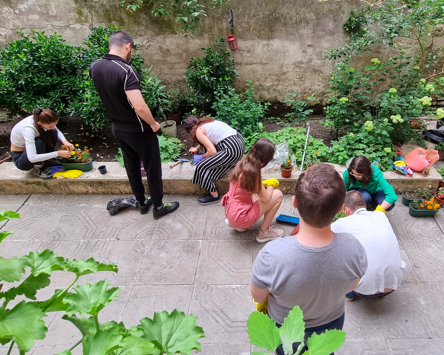Climate change affects each and every one of us. With over 11, 000 signatures scientists around the world declare clearly and unequivocally that planet Earth is facing a climate emergency(Ripple et al., 2020). In 2019: “2,268 jurisdictions in 39 countries around the world have declared a climate emergency. Populations covered by jurisdictions that have declared a climate emergency amount to over 1 billion citizens” (Climate Emergency Declaration, 2019). There is a ton of information on this topic, leading us to the conclusion that we are in dire need to take action against the climate crisis. But the good news is that everyone can help, especially the youth. We believe that young people have an extremely important role in creating a better future for all and even bettering the present climate conditions. They are the next generation of decision-makers and global leaders.
The first thing that young people can do in the fight against climate change is to get informed and well prepared for climate action (Hinton, 2021). They need evidence and competency in order to tackle the climate crisis and contribute to a safer and more sustainable future. They can be educated through: schools, colleges, universities and other educational bodies that have integrated climate change education into core curricula; print media and trustworthy online platforms; thinking about environmental footprint and reducing personal impact as far as possible. In our Youth House, we occasionaly conduct seminars and workshops about ecology and healthy lifestyle. We also have gardening activities which are cherished by many of them because it makes them feel one with the nature. This practical activity improves their awareness about environmental problems like nothing else. One of the boys from our group even found a farming job and he enjoys it a lot.
After getting informed the next step for the youth is taking a strong stance on the topic of climate change. The younger generation should be heard. They should speak up: share the numbers and spread the science using the latest data (Hinton, 2021). Fortunately, the young people we work with are educated about “the ins and outs” of Internet, which is fundamental when trying to spread important information globally. For instance, Greta Thunberg, only 15 years old, managed to capture the attention of the world’s media and not only that, she inspired millions of teens to take part in demonstrations and the most important thing: she opened a dialogue about climate change. Internet is not the only place for spreading awareness, and our group of young people advocate for climate action also within their families and communities.
The new information can be applied into new lifestyle changes as well (Hinton, 2021). These changes are possible for every age group, they can be small and can start at home or at school. For instance: using predominantly public transportation, walking or riding a bike instead of going to school by car. Another good way of helping the Earth is by buying less: from clothes to food to electronics and more. Nowadays there is actually a lot of young people who buy second hand clothes, try to style them, alter or give them a new life. It’s way more affordable to buy second hand; it gives you the opportunity to be creative and of course – it doesn’t produce more waste. Another way to use style and help the climate crisis is through using less plastic and more reusable bags e.g. tote bags. The young people we work with love creating different items and once we had an art workshop where they decided to draw on a textile bag, which they wear wherever they go.
The future is in the hands of our youth. They are more aware, ready to listen, learn and ready to be responsible. There is a lot of ways to do that, but every one of them is through getting educated and being capable of changing for the better. They are open to try new things, even if that means leaving some of the luxuries of the present behind. Young people are and will be active in the context of climate emergency.
References
Climate emergency declarations in 549 councils cover 65 million citizens – Climate Emergency Declaration. (2019, May 22). Climate Emergency Declaration. https://climateemergencydeclaration.org/climate-emergency-declarations-cover-15-million-citizens/
Hinton, R. (2021). Young people’s fight against climate change: Actions we can take for health and well-being. Knowledge Summary: 2021 Women’s, Children’s and Adolescents’ Health, 38.
Ripple, W., Wolf, C., Newsome, T., Barnard, P., & Moomaw, W. (2020). World Scientists’ Warning of a Climate Emergency. Bioscience, Oxford University Press (OUP). https://doi.org/10.1093/biosci/biz088/5610806


